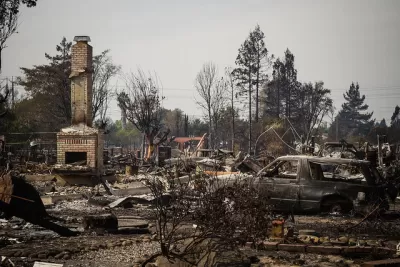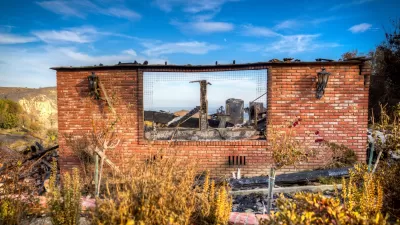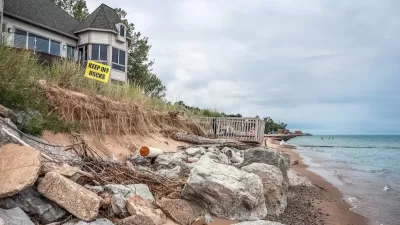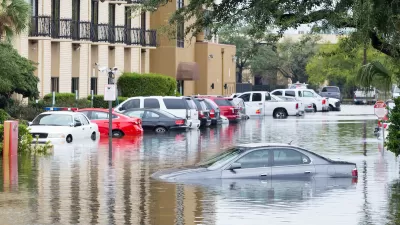Setting insurance rates by looking to the past to predict the future doesn’t make sense with increasing environmental uncertainties, argues the California insurance industry.

Ry Rivard reports that insurance companies in California are arguing that the "new normal" of climate change is altering the insurance landscape. "Near the top of the industry’s wish list is a wonky request: Let insurers set premiums based on the risk of fires that could burn someday soon."
The current approach is to use past losses to predict future ones. But many of the most catastrophic events have happened fairly recently and the frequency and severity of disasters will likely increase in the future. “Since the 1980s, insurers have used increasingly sophisticated computer models to prepare for hurricanes and earthquakes. The California Earthquake Authority, a government-run insurer, uses catastrophe models to set rates, as does a similar effort in Florida to provide hurricane insurance,” writes Rivard.
Critics say that allowing insurers to set rates based on catastrophe models would limit transparency, and they contend that the models do not accurately predict future risks, notes Rivard. "Regulators worry the models aren’t credible, and that they’re a 'black box' and could be used to overcharge consumers."
FULL STORY: Insurance Companies Say They're Not Allowed to Plan for the ‘New Normal’ of Intense Wildfires

Alabama: Trump Terminates Settlements for Black Communities Harmed By Raw Sewage
Trump deemed the landmark civil rights agreement “illegal DEI and environmental justice policy.”

Planetizen Federal Action Tracker
A weekly monitor of how Trump’s orders and actions are impacting planners and planning in America.

Why Should We Subsidize Public Transportation?
Many public transit agencies face financial stress due to rising costs, declining fare revenue, and declining subsidies. Transit advocates must provide a strong business case for increasing public transit funding.

Understanding Road Diets
An explainer from Momentum highlights the advantages of reducing vehicle lanes in favor of more bike, transit, and pedestrian infrastructure.

New California Law Regulates Warehouse Pollution
A new law tightens building and emissions regulations for large distribution warehouses to mitigate air pollution and traffic in surrounding communities.

Phoenix Announces Opening Date for Light Rail Extension
The South Central extension will connect South Phoenix to downtown and other major hubs starting on June 7.
Urban Design for Planners 1: Software Tools
This six-course series explores essential urban design concepts using open source software and equips planners with the tools they need to participate fully in the urban design process.
Planning for Universal Design
Learn the tools for implementing Universal Design in planning regulations.
Caltrans
Smith Gee Studio
Institute for Housing and Urban Development Studies (IHS)
City of Grandview
Harvard GSD Executive Education
Toledo-Lucas County Plan Commissions
Salt Lake City
NYU Wagner Graduate School of Public Service





























